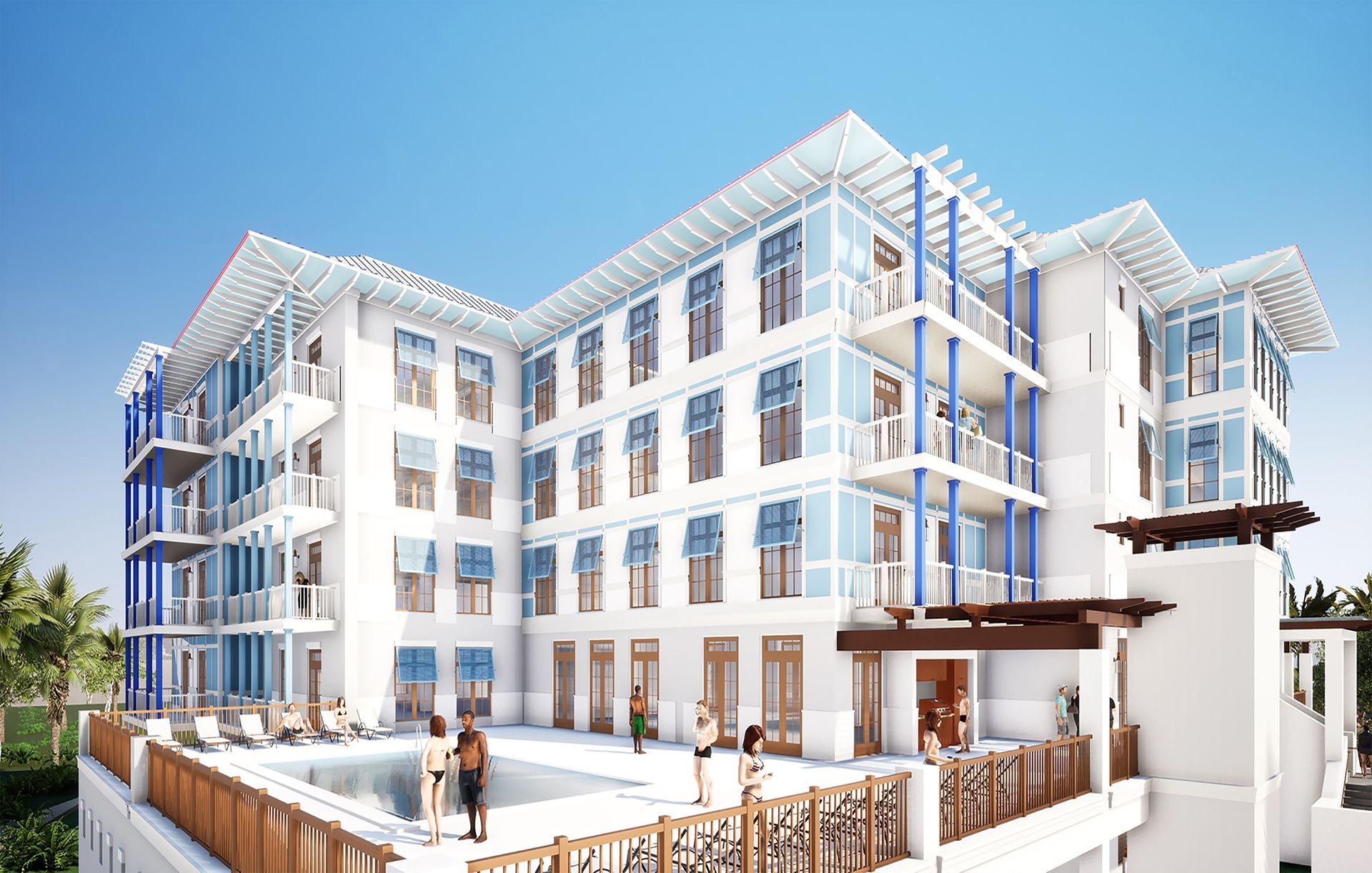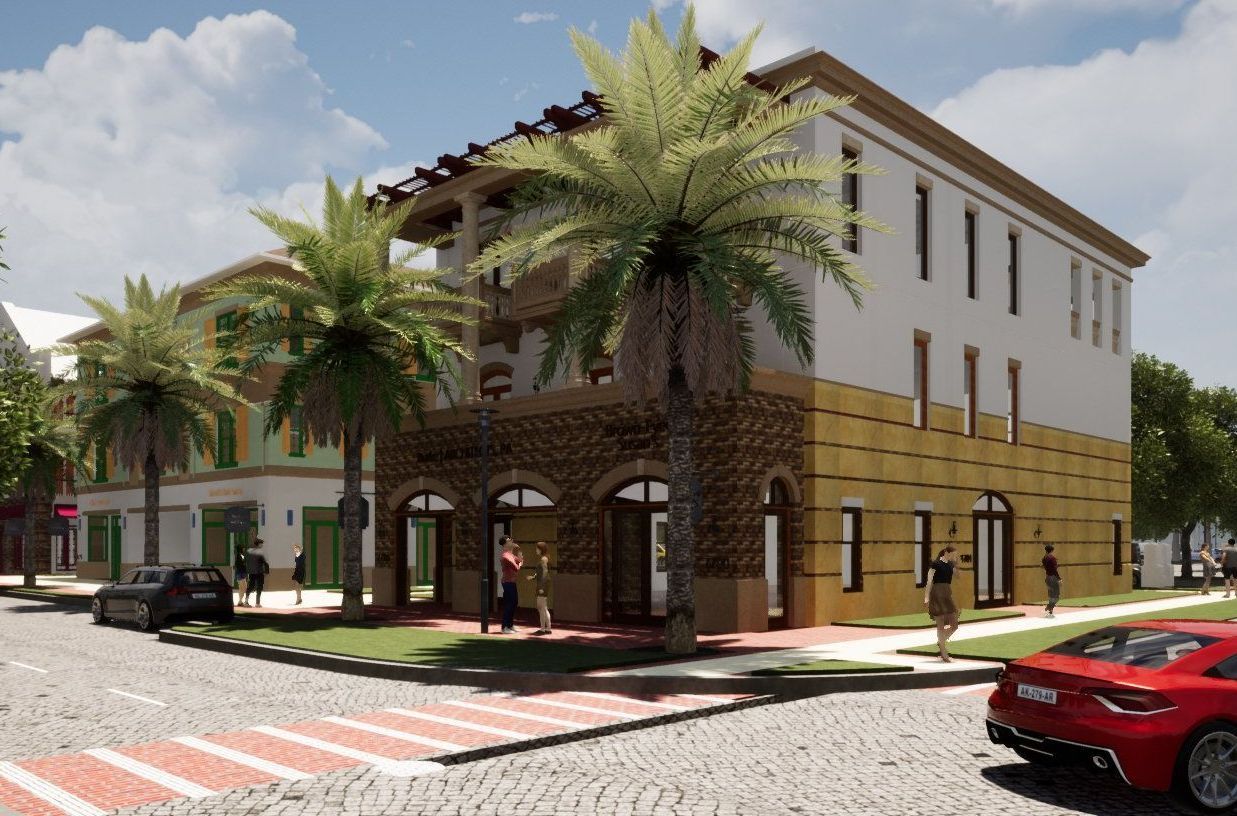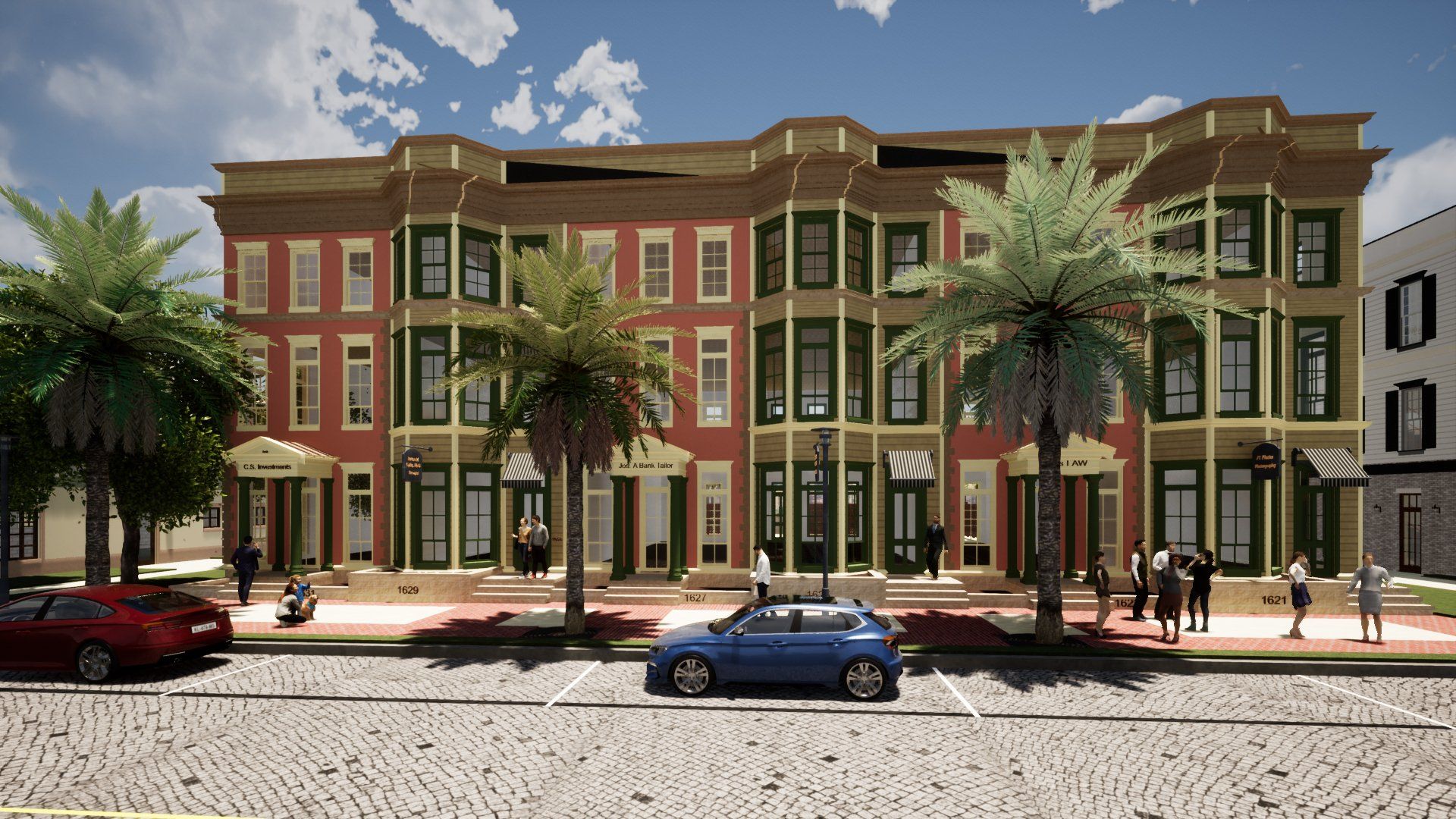Does Missing Middle Housing Negatively Affect Single-Family Home Values?
As I have discussed in previous blogs on Missing Middle housing, the term refers to diverse and attainable housing options that fit between single-family homes and large scale, high-density apartment buildings. Missing Middle has been with us for more than 100 years, but zoning beginning in the late 1920's restricted the ability to develop this type of project in most U.S. cities.
Along with restrictive zoning, a general misunderstanding of Missing Middle housing has caused local communities to question its impact on property values to surrounding single-family homes. Such confusion has stalled or even halted developments from moving forward, even in communities that are in desperate need of attainable housing for rent or for sale.
Several studies have shown the value of the single-family home is more likely to be improved by having the Missing Middle building next door.
According to reports from the National Association of Home Builders (NAHB) and Opticos Design, areas with a mix of housing types tend to have greater stability in home values than areas with only single-family houses.
As the reports and case studies show, cities around the U.S. are finding that a diversity of housing options attracts a broader range of buyers and renters, provides market flexibility, offers desirable amenities, attracts long-term investors, and the communities benefit from well-thought-out urban planning and zoning policies.
Missing Middle housing addresses the severe deficit in housing with options that offer a desired type of living accommodations where there is high-demand and a limited supply of housing. (See US Housing Starts chart below.)

Housing Demand and Changing Demographics
Missing Middle housing addresses the severe deficit in housing with options that offer a desired type of living accommodations where there is high-demand and a limited supply of housing.
These types of homes also address the shift in the demographic makeup of homebuyers since 2000.
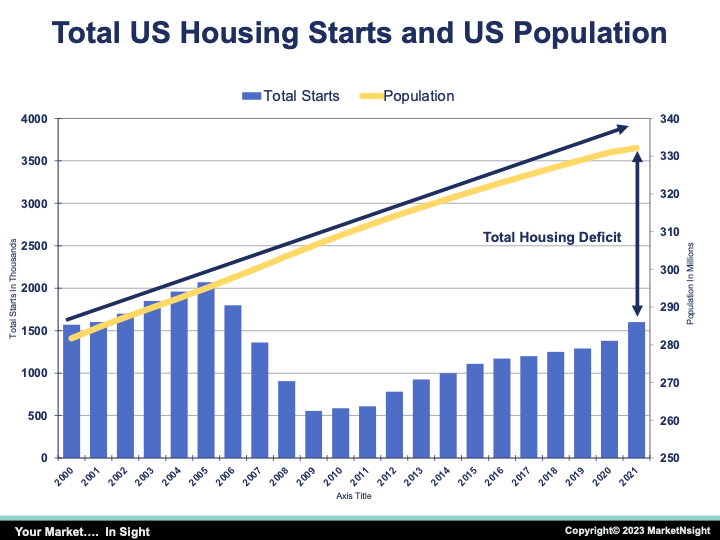
In his 2023 presentation, The Extinction of the Starter Home in America: Could Missing Middle Housing Be the Answer?, John Hunt of MarketNsight shared details about U.S. housing market conditions and demand.
The dramatic lag in housing starts since 2008 has created a deficit in housing felt across the country — and across all demographics.
Hunt notes the significant pressure the
two largest generations now have on the housing market.
The Baby Boom generation drove housing demand in 2000, as they moved up into homes to accommodate growing families. They continue to drive housing demand in 2023, as they look to retire, often preferring to downsize their homes and the amount of maintenance needed.
There's further pressure on today's housing market from first-time buyers, primarily the Millennial generation. Like their Boomer counterparts, they are looking for homeownership options that fit their lifestyles.
Both groups are attracted to smaller, low-maintenance homes in desirable, walkable communities with easy access to entertainment, dining, retail, and more. (Sounds a lot like the Missing Middle communities built in the early 1900s!)
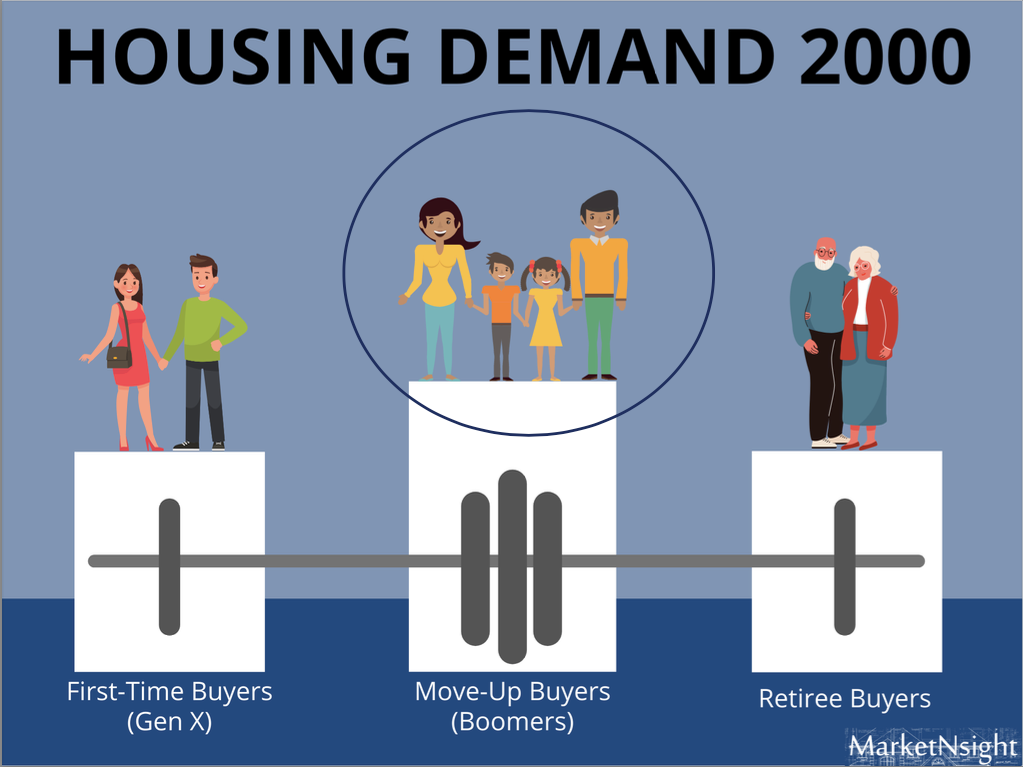
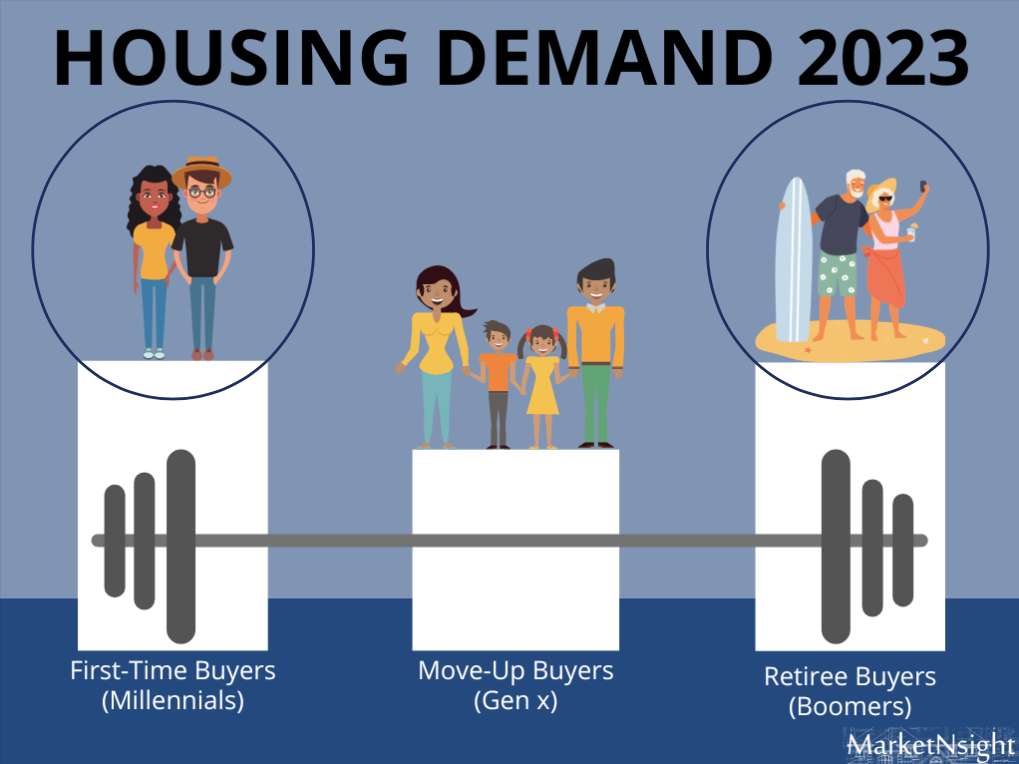
The Return of the Missing Middle
Missing Middle options historically checked off the boxes that today's homebuyers want. Usually ranging in size from 950 sqft to 1759 sqft, these homes are significantly smaller and less costly than larger single-family homes.
It's no wonder there is a resurgence in interest in the Missing Middle.
Compared to single-family homes, Missing Middle homes in the U.S. saw a spike in popularity in the late 1960s and into the mid-1980s, but then dropped off again in the early 1990s.
While single-family housing starts plummeted with the 2007-2008 recession, the multifamily homes of the Missing Middle remained more stable. (see chart 1-12)
The gap between the two types of housing has narrowed and remained stable. Especially as single-family home prices have soared in recent years.

The movement to add more Missing Middle multifamily housing is taking place in many parts of the country.
Washington state recently passed legislation outlawing restrictive single-family zoning that opens the door for the Missing Middle to flourish. Similar legislation in Minnesota, Texas, Oregon, North Carolina, and other states, supports the potential to make home ownership more attainable for the younger generations and to create housing solutions for reducing homelessness.
Success in communities across the country is already showing that Missing Middle housing can increase economic diversity and provide opportunities for families and individuals to own or rent homes in desirable neighborhoods (closer to jobs, school, and essentials such as grocery stores). This can lead to a thriving and diverse community, which can have a positive impact on local businesses and the overall sustainability of the area.
While some Missing Middle projects initially face resistance from residents, developers, and outdated zoning, with a greater understanding of the value these homes bring to individuals, families, and communities, we have reason to be optimistic these projects will be successful solutions to the severe shortage of attainable housing.
This is part 5 in my series on Missing Middle housing.
About the author: Greg Burke, FAIA, NCARB is a St. Augustine, Florida based architect with more than 40 years in the profession and the President of Gregory John Burke | ARCHITECT, PA. He is licensed to practice in eight states. He has been an ardent proponent of solving the affordability issue for housing and currently advises to the St. Johns County (Florida) Affordable Housing Advisory Council. He is also a member of the Florida Board of Architecture and Interior Design.

